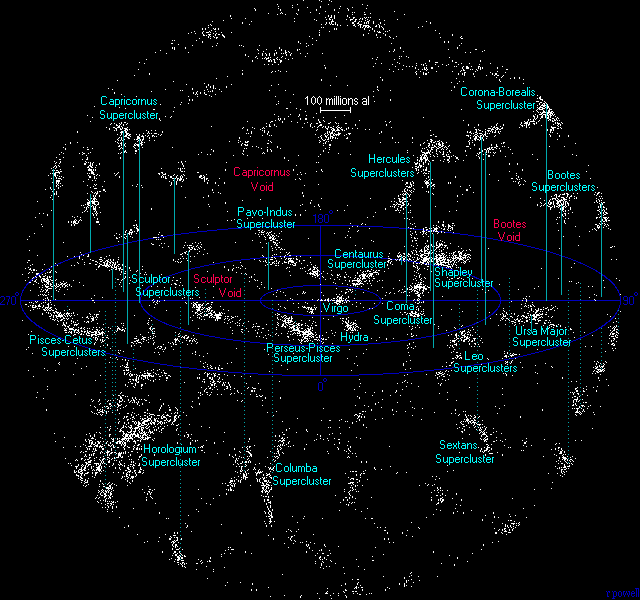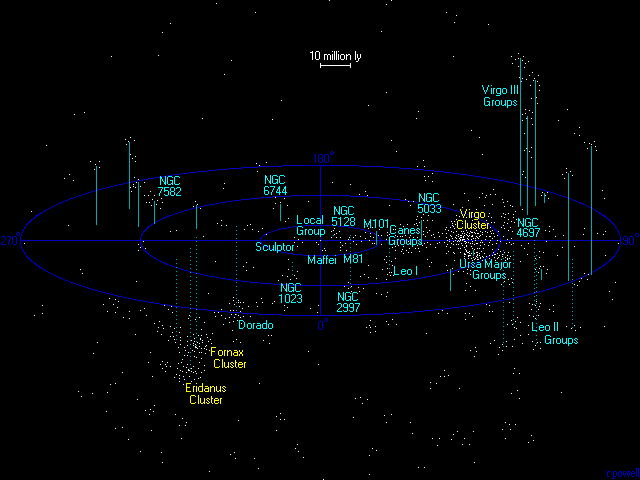supercluster

Figure 1. Superclusters within 1 billion light-years.

Figure 2. Local Supercluster.
A supercluster is a cluster of clusters of galaxies. Superclusters range in size from 100 million to at least 300 million light-years across and typically contain tens of thousands of galaxies. They are usually embedded in large sheets and walls of galaxies surrounding immense voids in which very few galaxies exist. Superclusters are believed to have formed in the early universe when matter clumped together under the influence of gravity. Our galaxy lies within the Local Supercluster. The largest known supercluster is the Shapley Concentration. According to one recent survey, there are 130 superclusters out to a distance corresponding to a redshift of z = 0.1 (about 300 Mpc/h).


